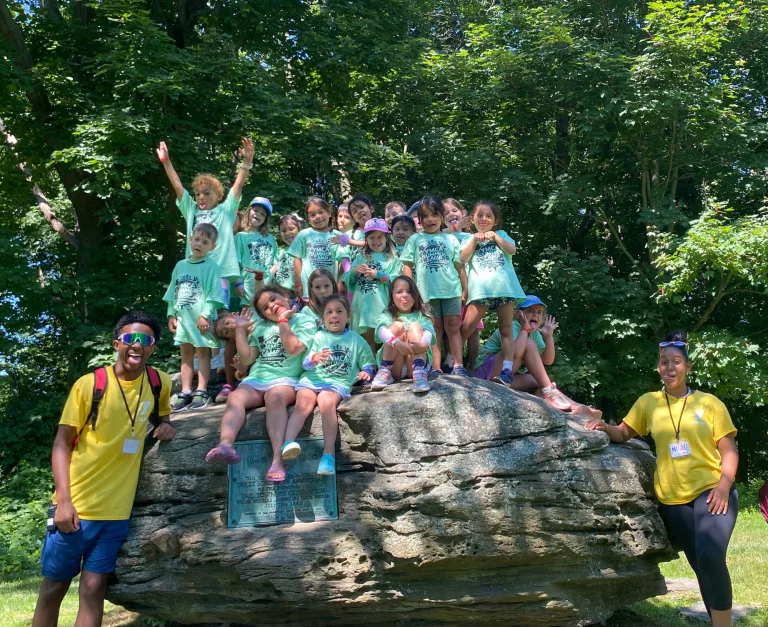

By Jim Knox
Wildly Successful: The Eastern Bluebird
The triumphant return of spring that you can find in your backyard by Jim Knox.
The first lime-green shoots of Skunk Cabbage, the quacking chorus of Wood Frogs and the cheerful call of the Red-winged Blackbird. You know what they are. The medley of certain undeniable signs of spring we each hold dearly. We anxiously await their arrival, and with them, the return of longer days, blooms, blossoms and the promise of the warm months to come.
For me, spring’s arrival wouldn’t be official without the appearance of a small yet unmistakable creature. Every year we scan the yard and the exposed tree limbs at the forest’s edge for their return. Sure enough, they arrived as scheduled. We looked out beyond the back porch and there, perched 12 feet aloft on a Maple branch, was the male. With a Brilliant Royal blue cap, wings and back and a rusty breast, he was a striking bird. We scanned for his mate and soon located her no more than 30 feet distant. Though more discrete, she was an equally beautiful bird, replacing his Royal blue with Cerulean and gray. The Eastern Bluebird, Sialia Sialis, is a small member of the Thrush family. Though just 6-8 inches in length, and weighing just one ounce, they are little birds with a big following.
Expected and restorative at the same time, we were so happy to see them. We could forget about the occasional frost tinged night or multi-layered morning. The Bluebirds were back–spring was here. There was confidence in this. Set-your-watch assurance to it. We can say this because the Bluebirds’ return is synchronized with the remarkably varied and choreographed spectacle that is spring in Southern New England. As broad omnivores, the birds return to capitalize on the reemergence of spring insect life. This protein-rich diet is essential to bolster the female’s energy stores for the energy-demanding expenditures of nest-building, egg-laying and raising her brood. In the coming weeks, the blooms and blossoms yield fruit, berries and seeds. The birds have returned from more southern haunts to feast on this diverse diet and raise their young. In fact, in most years the bounty is so great, Bluebirds raise at least two broods.
Eastern Bluebirds have an interesting domestic dynamic. Males select a nest cavity, gather nesting materials and then display above the cavity by waving their wings to attract the attention of the females. Once they woo their mates, the males leave the nest building and incubation duties exclusively to the ladies. Yet a seeming life of parental leisure quickly evaporates for these fathers-to-be. Their active foraging kicks into overdrive on fruit, insects and berries. As omnivores with a hidden side, these small birds survive and thrive as opportunists seizing the occasional shrew, snake, lizard, tree frog or salamander. It may be risky for the Bluebird but their drive to feed their young is strong and there is more to this little thrush than meets the eye.
In fact, the admiration of the bluebird, in its many related species incarnations, has stood the test of time. Dating from 1766 BC in China’s Shang Dynasty to the present day, Bluebirds have been favored as harbingers of gentle weather, hope and beauty for millennia. From the oral histories of First Nations tribes, to Russian folklore, to The Bluebird of Happiness, the bluebird has been an evocative fixture across cultures.
The sharply-plumaged State Bird of both New York and Missouri has even made his mark on Tinseltown in The Wizard of Oz, ”Somewhere over the Rainbow, Bluebirds fly…”. He gets a shout out in The Beatles, Yellow Submarine and The Beach Boys literally sing his praise in “Bluebirds Over the Mountain.”
Why this profound effect over so many people, across so many cultures, over the ages?
Timing is everything so they say. If artists, musicians, poets and writers across the ages were to design a living creature who could embody the welcome of a spring breeze, the warmth, color, song and long-awaited bounty of the season, they couldn’t quite touch the “rightness” of this little bird.
Nature restores when we are at our lowest ebb. Equal parts beautiful, strong and timely, the Bluebird is the tonic for what ails us. Never could we use its appearance more than today. The moment spent reaching for our cell phone is the moment we may capture but cannot truly savor. In our drive to “post”, we may miss what matters most. To me, the Bluebird is that creature, that moment nature generously offers each of us with nothing expected in return other than to appreciate a mild breeze carrying notes that touch our hearts and pledge an unbreakable promise of better days ahead.
Jim Knox serves as the Curator of Education for Connecticut’s Beardsley Zoo and as a Science Adviser for The Bruce Museum. Jim has a passion for working with endangered creatures and for sharing that knowledge with people of all ages.





